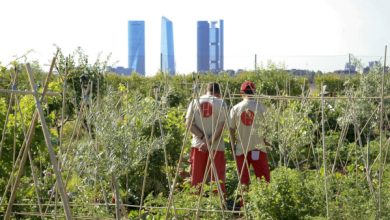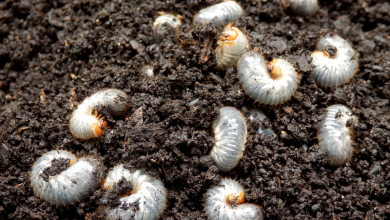Dandelion: [Care, Planting, Characteristics, Irrigation and Substrate]
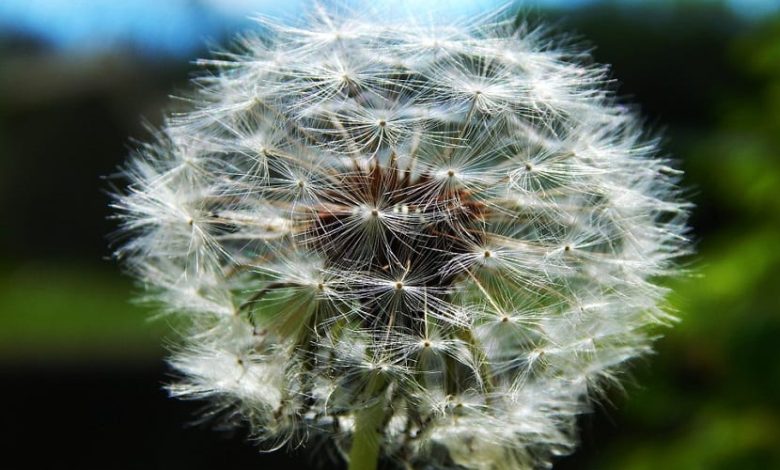
 Taraxacum is a large genus of flowering plants in the Asteraceae family, which is made up of species commonly known as dandelions.
Taraxacum is a large genus of flowering plants in the Asteraceae family, which is made up of species commonly known as dandelions.
The genus is native to Eurasia and North America, but the two common species worldwide are T. officinale and T. erythrospermum.
They were introduced from Europe and are now spread as wild flowers.
Dandelion Characteristics
- Name: Taraxacum officinalis.
- Family: Asteraceae.
- Type: perennial.
- Height: 10 to 15 cm.
- Exposure: lots of sun.
- The floor: ordinary.
- Harvest: 10 to 12 months after sowing.
Taraxacum species are perennial taproot herbaceous plants native to temperate zones of the northern hemisphere.
The genus has many species, which generally reproduce by apomixis, allowing them to spread easily. In the British Isles alone, 234 microspecies are recognized in nine loosely defined sections, of which 40 are probably endemic.
Temperature: Where to plant dandelions?
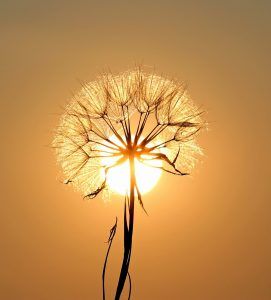 Dandelions prefer full sun, but will clearly grow in any light.
Dandelions prefer full sun, but will clearly grow in any light.
As you may know, it doesn’t really matter what kind of soil you have as long as the drainage is adequate, because these plants are incredibly hardy and tolerant of poor conditions.
Add generous amounts of compost to the areas you are planting if you plan to harvest the roots.
How we prepare the land
As the wild varieties demonstrate, they are not particularly picky about the type of soil they grow in.
If dandelions are grown for their roots, they will do best in deep, rich, moist soil.
How and how often do we water?
Keeping the soil moist will aid in the production of quality leaves and protect dandelions from disease.
That said, they can withstand drought and only require water when the soil is dry.
Important points when growing dandelions
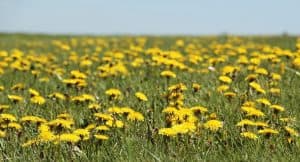 Dandelions have a bitter taste and can be eaten raw in salads or cooked. The roots of the plant can be roasted and the flowers can be pressed to make wine.
Dandelions have a bitter taste and can be eaten raw in salads or cooked. The roots of the plant can be roasted and the flowers can be pressed to make wine.
Sowing dandelion seeds indoors can improve your chances of successfully raising the plants to maturity outdoors.
You start your seeds six to eight weeks before the last frost and transplant in mid to late spring.
To prevent dandelions from taking over your garden, separate seedlings into individual pots once they’ve reached a height of about 1 inch.
Plant dandelion step by step
- Prepare the seedbed for your dandelions by adding compost or an all-purpose plant fertilizer to the soil. Although dandelions tend to grow well even in poor quality soil, they respond best to fertile soil.
- Sow your dandelion seeds 1 to 3 inches deep in your seedbed; in mid to late spring, spacing the seeds about 6-8 centimeters apart. Dandelion seeds require a lot of light to germinate, so don’t cover them with soil.
- Water the dandelion seeds lightly, keeping the top of the soil moist but not wet. Dandelions grow quickly when well watered, so it’s best to control the amount of water they receive so they don’t grow out of control.
- Prune seedlings after their first leaves and stems appear. Pinch back smaller specimens and keep enough large seedlings so that they are 10-12 inches apart.
- Let your dandelions grow for several weeks until they begin to produce broad, green leaves. The leaves of your plants can vary in appearance depending on the type of cultivation you are growing.
- Dig up dandelion plants with a needle-nose shovel if you plan to harvest the roots. Dandelion plant roots are best harvested in the fall of the first year or early spring of the second year.
- Leave your dandelion plants unharvested for next year.
harvest dandelions
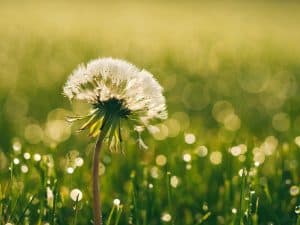 A few weeks before harvesting the leaves, cover the plants with a dark, opaque cloth to block out most of the light, which will whiten the leaves, reducing bitterness.
A few weeks before harvesting the leaves, cover the plants with a dark, opaque cloth to block out most of the light, which will whiten the leaves, reducing bitterness.
The youngest leaves are the least bitter and the most flavorful. Young leaves can be collected during the growing season.
If you are harvesting the flowers, pick them when they are young and bright yellow. Use them while they are still fresh, making sure to remove all stems.
To prevent flowers from closing after cutting, place them in a bowl of cold water, removing them just before eating or serving.
The roots can be harvested at any time. Chop the dried roots into 2-3 centimeter pieces and roast them at 150ºC for about 10 minutes. Grind the roasted pieces, adding a quarter teaspoon to coffee or hot chocolate for wonderful flavors.
How tall can my dandelion plants get?
Each dandelion will be between 5 and 40 cm tall depending on the variety that is grown.
They are also hardy plants that grow almost anywhere, from gardens to roadsides, fields and meadows.
Some may consider them a «weed» and even an invasive plant, but their leaves can have many health benefits and are used in cooking and medicinal purposes around the world.
Pests and diseases that affect dandelions
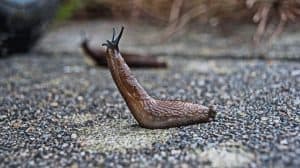 Dandelions are fairly hardy plants and are not subject to too many problems.
Dandelions are fairly hardy plants and are not subject to too many problems.
Most dandelions can grow in virtually all seasons and are hardy to all temperatures, sometimes even frost.
Dandelions are actually a form of «weed» that grows in a variety of conditions and can grow out of control if left unchecked.
While most dandelions grow in the spring, they can germinate in any season and in a variety of temperatures, both in hot and cool weather.
Many will bloom again in the fall after the initial blooming period is over. Each plant will grow for 5-10 years and can reach a fairly decent size when their growth cycle is uninterrupted.
That said, one of the biggest enemies of dandelions is usually slugs and snails.
Varieties of dandelions
You’ll find well-adapted dandelions in different places around the world. They are part of the Taraxacum genus, which consists of perennial plants with long roots and flower heads.
Amélioré à Coeur Plein (French Dandelion)
 This variety produces a bountiful harvest in a small space and is good for containers and urban plots.
This variety produces a bountiful harvest in a small space and is good for containers and urban plots.
The leaves are delicate and tasty.
Vert de Montmagny
Vert de Montmagny grows strong and has large leaves. It is considered the most resistant variety for cold areas and is also fast growing.
Pissenlit Coeur Plein
The French love dandelions, and Pissenlit Coeur Plein is another common variety in the country.
It is known as the Improved Heart variety for its compact heart-shaped rosettes. It is a productive type of dandelion, and the thick leaves are well suited for fresh salads and cooking.
It grows best in full sun.
Italiko Red (Chicory)
This Italian variety is in the same family as dandelions, but is a different genus known as chicory.
Italiko Red adds a beautiful red color to salads, and the leaves have excellent flavor. It is hardy and adapts well in cold weather.
clio
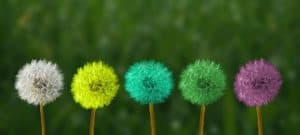 Clio provides uniform, upright leaves that will produce continuously all season for a cut-and-turn harvest. It is less prone to escape than some varieties.
Clio provides uniform, upright leaves that will produce continuously all season for a cut-and-turn harvest. It is less prone to escape than some varieties.
red dandelion
This bitter variety is best grown as a microgreen. It can be harvested after a few weeks and reseeded to have it continuously.
broad blade
Also known as common dandelion. Just because it’s not the tastiest doesn’t mean you should forget about it. The leaves are thick and not as tender or easily blanched, but they still have their uses.


